-

汇编语言程序设计
《汇编语言程序设计》讲述每种高级语言程序在连接为可执行程序之前,都必须被编译为汇编语言程序,因此对于高级语言程序设计者来说,了解编译器如何生成汇编语言代码十分有用。 -
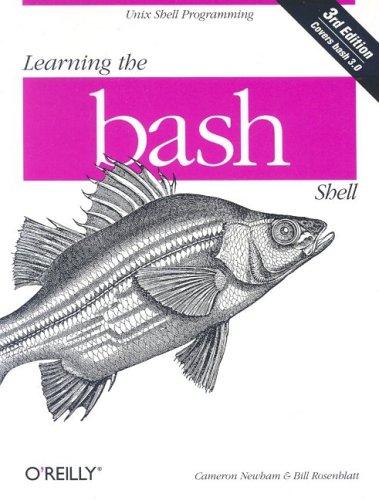
Learning the bash Shell
This refreshed edition serves as the most valuable guide yet to the bash shell. It's full of practical examples of shell commands and programs guaranteed to make everyday use of Linux that much easier. Includes information on key bindings, command line editing and processing, integrated programming features, signal handling, and much more! O'Reilly's bestselling book on Linux's bash shell is at it again. Now that Linux is an established player both as a server and on the desktop Learning the bash Shell has been updated and refreshed to account for all the latest changes. Indeed, this third edition serves as the most valuable guide yet to the bash shell. As any good programmer knows, the first thing users of the Linux operating system come face to face with is the shell the UNIX term for a user interface to the system. In other words, it's what lets you communicate with the computer via the keyboard and display. Mastering the bash shell might sound fairly simple but it isn't. In truth, there are many complexities that need careful explanation, which is just what Learning the bash Shell provides. If you are new to shell programming, the book provides an excellent introduction, covering everything from the most basic to the most advanced features. And if you've been writing shell scripts for years, it offers a great way to find out what the new shell offers. Learning the bash Shell is also full of practical examples of shell commands and programs that will make everyday use of Linux that much easier. With this book, programmers will learn: * How to install bash as your login shell * The basics of interactive shell use, including UNIX file and directory structures, standard I/O, and background jobs * Command line editing, history substitution, and key bindings * How to customize your shell environment without programming * The nuts and bolts of basic shell programming, flow control structures, command-line options and typed variables * Process handling, from job control to processes, coroutines and subshells * Debugging techniques, such as trace and verbose modes * Techniques for implementing system-wide shell customization and features related to system security -
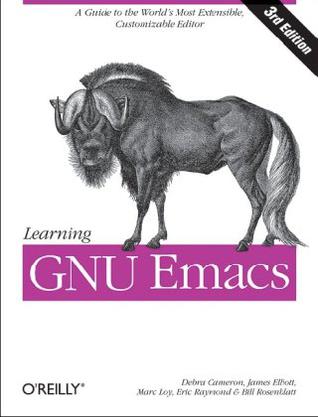
Learning GNU Emacs Third Edition
The third edition of Learning GNU Emacs describes Emacs 21.3 from the ground up, including new user interface features such as an icon-based toolbar and an interactive interface to Emacs customization. A new chapter details how to install and run Emacs on Mac OS X, Windows, and Linux, including tips for using Emacs effectively on those platforms. GNU Emacs is the most popular and widespread of the Emacs family of editors. It is also the most powerful and flexible. Unlike all other text editors, GNU Emacs is a complete working environment--you can stay within Emacs all day without leaving. Learning GNU Emacs, 3rd Edition tells readers how to get started with the GNU Emacs editor. It is a thorough guide that will also "grow" with you: as you become more proficient, this book will help you learn how to use Emacs more effectively. It takes you from basic Emacs usage (simple text editing) to moderately complicated customization and programming. The third edition of Learning GNU Emacs describes Emacs 21.3 from the ground up, including new user interface features such as an icon-based toolbar and an interactive interface to Emacs customization. A new chapter details how to install and run Emacs on Mac OS X, Windows, and Linux, including tips for using Emacs effectively on those platforms. Learning GNU Emacs, third edition, covers: * How to edit files with Emacs * Using the operating system shell through Emacs * How to use multiple buffers, windows, and frames * Customizing Emacs interactively and through startup files * Writing macros to circumvent repetitious tasks * Emacs as a programming environment for Java, C++, and Perl, among others * Using Emacs as an integrated development environment (IDE) * Integrating Emacs with CVS, Subversion and other change control systems for projects with multiple developers * Writing HTML, XHTML, and XML with Emacs * The basics of Emacs Lisp The book is aimed at new Emacs users, whether or not they are programmers. Also useful for readers switching from other Emacs implementations to GNU Emacs. -
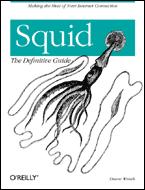
Squid: The Definitive Guide
Squid is the most popular Web caching software in use today, and it works on a variety of platforms including Linux, FreeBSD, and Windows. Squid improves network performance by reducing the amount of bandwidth used when surfing the Web. It makes web pages load faster and can even reduce the load on your web server. By caching and reusing popular web content, Squid allows you to get by with smaller network connections. It also protects the host on your internal network by acting as a firewall and proxying your internal web traffic. You can use Squid to collect statistics about the traffic on your network, prevent users from visiting inappropriate web sites at work or school, ensure that only authorized users can surf the Internet, and enhance your privacy by filtering sensitive information from web requests. Companies, schools, libraries, and organizations that use web-caching proxies can look forward to a multitude of benefits. Written by Duane Wessels, the creator of Squid, Squid: The Definitive Guide will help you configure and tune Squid for your particular situation. Newcomers to Squid will learn how to download, compile, and install code. Seasoned users of Squid will be interested in the later chapters, which tackle advanced topics such as high-performance storage options, rewriting requests, HTTP server acceleration, monitoring, debugging, and troubleshooting Squid. Topics covered include: Compiling and installing Squid Running Squid Using Squid's sophisticated access controls Tuning disk storage for optimal performance Configuring your operating system for HTTP interception Forwarding Requests to other web caches Using redirectors to rewrite user requests Monitoring Squid with the cache manager and SNMP Using Squid to accelerate and protect HTTP servers Managing bandwidth consumption with Delay Pools -
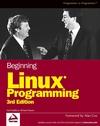
Beginning Linux Programming 3rd Edition
What is this book about? If you have some programming experience and are ready to venture into Linux programming, this updated edition of the bestselling entry-level book takes you there. The authors guide you step by step, using construction of a CD database application to give you hands-on experience as you progress from the basic to the complex. You’ll start with fundamental concepts like writing Unix programs in C. You’ll learn basic system calls, file I/O, interprocess communication, and shell programming. You’ll become skilled with the toolkits and libraries for working with user interfaces. The book starts from the basics, explaining how to compile and run your first program. New to this edition are chapters on MySQL® access and administration; programming GNOME and KDE; and Linux standards for portable applications. Coverage of kernel programming, device drivers, CVS, grep, and GUI development environments has expanded. This book gives you practical knowledge for real wor ld application. What does this book cover? In this book, you will learn how to * Develop programs to access files and the Linux environment * Use the GNU compiler, debugger and other development tools * Program data storage aapplications for MySQL and DBM database systems * Write programs that take advantage of signals, processes and threads * Build graphical user interfaces using both the GTK (for GNOME) and Qt (for KDE) libraries * Write device drivers that can be loaded into the Linux kernel * Access the network using TCP/IP sockets * Write scripts that use grep, regular expressions and other Linux facilities Who is this book for? This book is for programmers with some C or C++ experience, who want to take advantage of the Linux development environment. You should have enough Linux familiarity to have installed and configured users on Linux. -
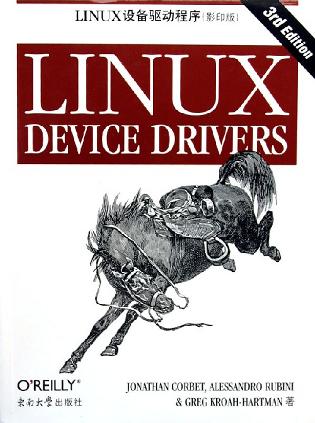
LINUX设备驱动程序
本书揭示了如何给大多数的设备编写驱动程序的信息,这些信息迄今仅通过口头或者隐晦的源代码注释被共享。你不必是一个内核高手就可以理解并享受本书,所需要的只是C以及Unix系统调用方面的背景知识。在不需要特殊的硬件设备就能编译和运行的详细示例的指引下,你将学会如何给字符设备、块设备和网络接口编写驱动程序。PCI、USB和tty(终端)子系统都单列一章。本书为那些对操作系统的工作机制好奇的人提供了地址空间、异步事件和I/O等方面的阐述。